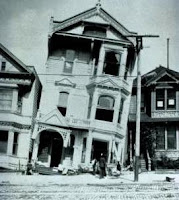Improving your home for lifestyle is one thing. Preparing your home, family and neighborhood for the inevitable natural disaster is something different entirely. Housing not prepared for a major earthquake may become uninhabitable. It is worth your time to have a structural assessment performed in the interest of protecting your investment.
In 1976, The Uniform Building Code adopted standard construction methods for wood frame homes, followed by incremental improvements to the code through 1994. Homes built since 1994 are the most resilient structures due to the seismic requirements detailed in the current building codes.
In the Seattle area, single family residences most susceptible to damage from an earthquake are built from 1947 to 1988, depending on methods, materials, regulations, and soil types of their construction. Some local municipalities offer contractors specialized training to perform seismic retrofitting on existing homes. An internet resource, http://www.seattle.gov/emergency/info provides excellent information for professional or do-it-yourself residential retrofitting.
Over the past few years, I have encouraged our staff to become more aware and better prepared at home and at work. Members of our company are represented in three prominent community groups: COAD (Community Organizations Active in Disaster), MYN (Map Your Neighborhood), and recently Seattle
Step 1 Education
Understand how to prepare your home, family and neighborhood and get those people involved.
Step 2 Audit your home
The ground shakes and rolls during a major earthquake and can easily shift heavy objects. Assess your home’s structural integrity and attach tall furniture to the wall.
Step 3 Audit your vehicle
An emergency kit should be in your vehicle to include water, food, cash, comfortable and warm clothing, prescriptions and other items for infant, elderly or disabled family members.
Step 4 Build your 72 hour kit
You should have a disaster preparedness kit in your home for at least 72 hours of survival for all occupants of the home. Envision worst case scenario of 7.8 magnitude quake during a winter storm.
Step 5 Get involved
Host a Map Your Neighborhood program among your nearest 15-25 neighbors. More information available on the Consumer Resources pages of our website.
In the event of a natural disaster, the City of Redmond
Michael Tenhulzen, CGR, CAPS is President of Tenhulzen Remodeling in Redmond









